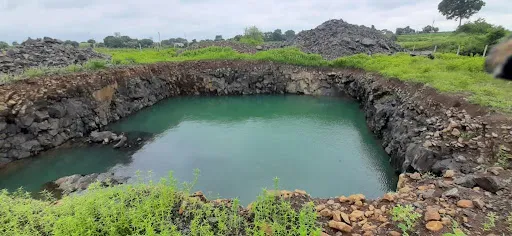 Contact us
Contact usIntent
Community
Studio Organo Concepts
About Us
Subsidaries
Studio Organo
TS RERA No.P02400003403.
TS RERA No.P02400003403.
%20(1).jpg)
Water for irrigation
The city of Hyderabad and the surrounding areas are known for average rainfall since a long time. Not much difference can be expected in the near future. However, there has been a slight change in terms of more rainfall in less time duration.
At Organo Antharam, the usage of water is categorized for different purposes like consumption, bath, toilets, collective farming, afforestation, goshala, herbal gardens, personal Farming and other green areas.
As water is the key factor for Community Development, It is precisely identified, calculated, used, reused and measured consistently at different stages like data collection, development and post development.
Area Allocation for Antharam
Total Rurban community development area - 60 Acres
More than 45 % of Land is used as green area (at 28 Acres) which consists of -
Area For Farming - 7.7 Acres
Area For Fruiting Trees - 5.6 Acres
Area For Forest Trees - 6.5 Acres
Area for Exotic Vegetables – at 0.3 Acres
Area For Poly house - at 0.6 Acres
Area For Landscaping - at 6.90 Acres
Rest of land is allotted for villa footprint, community infrastructure like roads, water treatments plants, STP, goshala, natural Nala, pathways.
large water consumption is required for green area which is a need of Community Development with respect to requirement of food (Vegetables & Fruits,) herbal produce via collective farming inside the community itself.
Water availability at Organo Antharam for Irrigation -
Based on the previous experience, Organo has arrived at the conclusion that tapping water from deep bore holes is not the apt solution in the longer run and also not suited to their Ideology of combined social development of neighbouring areas.
Based on the previous Multiple Award winning Rurban Project – Organo ‘Naandi’, the focus is to use maximum of rainwater in combination of STP water for Sustainable Water Management at Organo Antharam.
The purpose is to keep water demand below the water received from rainfall in the community area.
Two large dug wells (capacity - 60 lakh litres and 50 lakh litres) and a water pond (6 lakh litres) are made for rainwater storage. STP water output is around 60 thousand litres per day.

Water from these huge capacity tanks will be used for domestic and irrigation water demand. These tanks will be useful as a buffer stock in the case of draught situation as well.
Irrigation Water - Demand vs Supply - Moving Towards Net Zero
For the complete area, Green Zones are prepared on the basis of plantation types Such as -
Collective Farming Zones , Fruiting Tree Zones , Afforestation Zones, Shrubs’ Zones .
.webp)
While designing the landscape and other green areas with different Plant Palliate, native plantation is the first choice.
Lawn area which requires more water and maintenance is only 0.1 % of total area (total lawn area is 250 M2 out of total 242000 M2 Area 0.01 %).
.webp)
Specific plant zones with native species ultimately helps to design proper irrigation design network for the entire green area. These Zones helps proper operation scheduling which is required for uniform flow.
Water requirement for the entire green area is calculated based on the evaporation rates for 3 major seasons in the Project region.
The average water requirement for the green area is 425 M3 per Day.
Efforts are made to lower down this requirement at least by 30 - 35 % with the help of properly designed irrigation network and proper plant selection.
This system consists of pipe network in combination with Drip Irrigation + Sprinkler Irrigation components at low pressure and pressure regulating valves as per site situations.
.webp)
Considering the large area and topography, VFD Pumping System is provided for more accurate water flow and to minimize energy required for pumping.
Future plan is to provide Time based Automation for the entire Irrigation System for fine tuning of irrigation infrastructure.
Water Literacy
Success of any water infrastructure largely depends upon its proper design & installation and most importantly proper maintenance, scheduling with continuous monitoring of the system for maximum efficiency in the longer run.
Organo believes strongly that Water Literacy is equally important for Net Zero Mission in totality.
All effort are made during the project development to make each and every stakeholder water Literate in terms of water network provided for the community.
